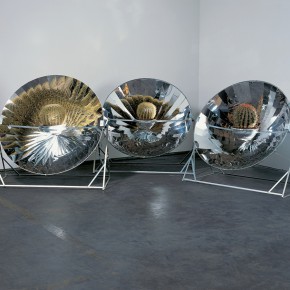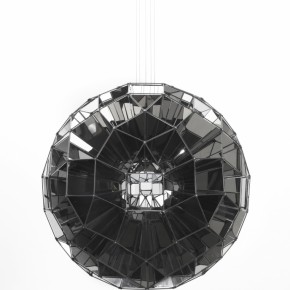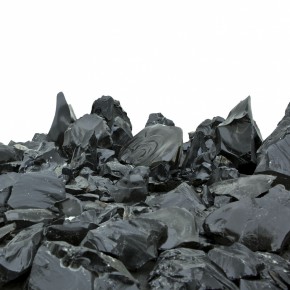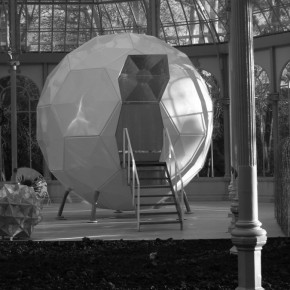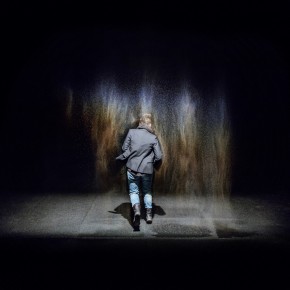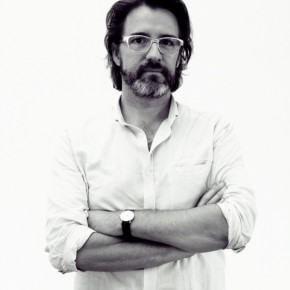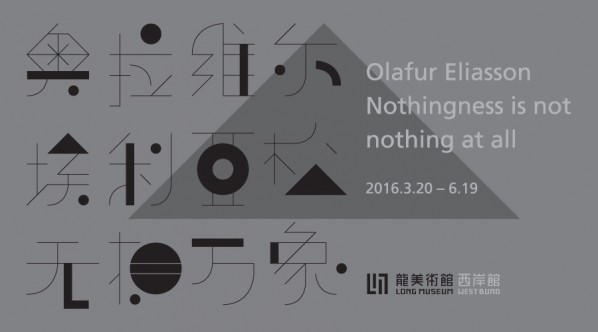
The Long Museum, Shanghai, is pleased to announce the first survey exhibition of the work of world-renowned Danish-Icelandic artist Olafur Eliasson in a Chinese museum: Nothingness is not nothing at all. Opening to the public on 20 March 2016, the career-spanning exhibition brings together artworks from the artist’s vast oeuvre, which extends from the early nineteen-nineties to the present and includes installations, sculptures, paintings, drawings, and film. A number of new artworks were conceived especially for the Long Museum exhibition, including the large-scale, site-specific installation The Open Pyramid (2016).
Ms. Wang Wei, co-founder and chief curator of Long Museum, says that, Olafur Eliasson is one of the most representative and influential artists working today, and she is highly impressed by the diversity of themes and great artistic tensions in his work. When Long Museum West Bund was still under construction, Eliasson spent a long time visiting the site, and this enthusiastic visit became the seed for the exhibition at Long Museum. She sees Eliasson as an artist with the brain of a scientist. His works reflect on nature and also demonstrate a lively, interested engagement in daily experience; he possesses an astonishing ability to activate space. She also sees Eliasson’s work as creating not merely single objects but rather overall experiences. His works invite visitors to enter his artistic world, and inspire their inner senses. She hopes that bringing Eliasson’s artworks to the Long Museum will give a fresh life to the space, and allow the Chinese public to have an opportunity to see these world-renowned artworks locally, in Shanghai.
Olafur Eliasson says as following:
I wanted to amplify the feeling of the cavernous museum galleries by installing artworks that invite visitors to look inwards, to question how their senses work, and dream up utopias for everyday life. Reality is what we make it to be – it is what we see, sense, think, feel, and do. It is also what things, artworks, spaces, and cities do to us. Art challenges our perspective on the world, turns it upside down, or suggests alternative views – I hope visitors to the exhibition will be inspired to undertake such enquiries. I see the questioning of what is as an opportunity. It makes that which we take for granted negotiable, open to change.
Through a diverse array of artworks, many of which suggest tools for experimental research, the exhibition invites visitors into a space of exploration that encourages their active engagement. The artworks were selected and arranged with particular attention to how they interact with the vaulted, austere concrete museum building designed by Atelier Deshaus. Inspired by the architecture’s combination of rectangular rooms and curved ceilings, Eliasson chose artworks for the exhibition that use basic geometrical principles such as circles, spheres, cubes, or pyramids. Pavilion-like structures create discrete stations within the building, and the capacious interior is divided into individual spaces through precisely curated constellations of artworks.
Many of the works include elemental materials such as stone, ice, water, or light. Series of photographs and colour paintings reflect Eliasson’s approach to studying the phenomenon of colour perception and investigating the world. Optical devices, lenses, mirrors, and glass spheres emphasise the dynamism and subjectivity of visual perception, providing opportunities for visitors to consider their own participation in the construction of what they see. The works direct the viewers’ attention towards the space they inhabit as well as to the act of perceiving it, highlighting their active role in the discovery and co-creation of their surroundings and the world.
About the artist
Olafur Eliasson (born 1967, IS/DK) is a visual artist who works in a wide range of media, including installation, painting, sculpture, photography, and film. Eliasson lives and works in Copenhagen and Berlin.
Since 1997, his critically acclaimed solo shows have appeared in major museums around the world, such as the Museum of Modern Art, New York; 21st Century Museum of Contemporary Art, Kanazawa; Martin-Gropius-Bau, Berlin; SESC Belenzinho, SESC Pompeia, and Pinacoteca do Estado, São Paulo; and the Venice Biennale. In 2003, his hugely popular The weather project, in the Turbine Hall of Tate Modern, London, was seen by more than two million people. In 2010, Eliasson created Feelings are facts at Ullens Center for Contemporary Art in Beijing together with the architect Ma Yansong. His most recent solo exhibition in China We have never been disembodied was on view at Mirrored Gardens, outside Guangzhou, in 2015. Eliasson’s projects in public space include Green river, realised in various cities between 1998 and 2001; The New York City Waterfalls, 2008; the crystalline facades of Harpa Reykjavik Concert Hall and Conference Centre (in collaboration with Henning Larsen Architects), 2005–2011; and Cirkelbroen (The circle bridge), Copenhagen, 2015.
Established in 1995, his Berlin studio today numbers about eighty craftsmen, specialised technicians, architects, archivists, administrators, and cooks. They work with Eliasson to experiment, develop, and produce artworks and exhibitions, as well as to archive and communicate his work, digitally and in print.
From 2009 to 2014, Eliasson led the Institut für Raumexperimente as a professor at the Berlin University of the Arts, and in 2014, he became an adjunct professor at the Alle School of Fine Arts and Design in Addis Ababa, Ethiopia.
In 2014, Eliasson and long-term collaborator Sebastian Behmann founded the international office for art and architecture Studio Other Spaces to focus on interdisciplinary and experimental building projects and works in public space.
Since 2012, Eliasson has directed the social business Little Sun, together with engineer Frederik Ottesen, which produces and distributes solar lamps for use in off-grid communities.
About the exhibition
Dates: Mar 20, 2016 — Jun 19, 2016
Opening: Mar 19, 2016 05:00
Organizer: Long Museum
Venue: Long Museum West Bund Gallery 1, Long Museum West Bund Gallery 2
Courtesy of the artist and Long Museum West Bund, for further information please visit http://thelongmuseum.org.


